I am going to try chipping and weathering a tank model for the first time, but then I was thinking. how long were most tanks in service in Ww2 before they were destroyed?
I mean, realistically how much chipping would happen before a tank was destroyed in battle
Armor/AFV
For discussions on tanks, artillery, jeeps, etc.
For discussions on tanks, artillery, jeeps, etc.
Hosted by Darren Baker, Mario Matijasic
Chipping vs historical accuracy

youpey

Joined: March 11, 2008
KitMaker: 528 posts
Armorama: 468 posts

Posted: Wednesday, April 29, 2020 - 08:19 AM UTC
brekinapez

Joined: July 26, 2013
KitMaker: 2,272 posts
Armorama: 1,860 posts

Posted: Wednesday, April 29, 2020 - 08:29 AM UTC
Really not a lot. You will get obvious spots like where the crew tends to mount and unmount the vehicle, scratches from pushing through obstacles like underbrush, fences, etc. Study a few work vehicles at a construction site for inspiration.They usually get more banged up than tanks but it helps show how and where chipping occurs.
Armorsmith

Joined: April 09, 2015
KitMaker: 1,063 posts
Armorama: 1,000 posts

Posted: Wednesday, April 29, 2020 - 08:42 AM UTC
Not a big fan of chipping but that may be because I am never satisfied with how mine turn out. Keep in mind the scale you are working in. In 1/35 a scratch/chip 1/35 of an inch would equal a 1 inch chip in 1:1.

GeraldOwens

Joined: March 30, 2006
KitMaker: 3,736 posts
Armorama: 3,697 posts

Posted: Wednesday, April 29, 2020 - 12:23 PM UTC
Quoted Text
I am going to try chipping and weathering a tank model for the first time, but then I was thinking. how long were most tanks in service in Ww2 before they were destroyed?
I mean, realistically how much chipping would happen before a tank was destroyed in battle
Most weathering now is wasted on showing discolored and chipped paint, when in fact, there was usually little time for finishes to deteriorate in combat. Most actual weathering is layers of dirt, dust or mud on top of rather new, even pristine paint. It can take years for paint to fade, but a tank can get absolutely filthy in an afternoon.
A few years ago, a British blogger noted that he had painted up a Panzer IV with all the preshading, pin washes, dot filters, chipped paint, rust streaks and other effects promoted by the Spanish School of modelers. He showed off his masterpiece to a German Eastern Front veteran. The old fellow shook his head sadly and smiled, saying "If only they lasted long enough to look like that."
brekinapez

Joined: July 26, 2013
KitMaker: 2,272 posts
Armorama: 1,860 posts

Posted: Wednesday, April 29, 2020 - 12:31 PM UTC
I would save faded paint for vehicles that sit outside in glaring bright sunlight such as in North Africa or the islands in the Pacific (affects mostly aircraft modelers).

barnslayer

Joined: July 29, 2002
KitMaker: 102 posts
Armorama: 102 posts

Posted: Wednesday, April 29, 2020 - 01:38 PM UTC
Yes some modelers create stunning effects with chipping. But I would like to see photographic evidence that this actually happened to the real vehicles.
Regarding American WW2 vehicles (and later as well) G.I.s and Marines wore boots with "rubber" soles. Not particularly harsh to the tank's paint.
Regarding American WW2 vehicles (and later as well) G.I.s and Marines wore boots with "rubber" soles. Not particularly harsh to the tank's paint.

cabasner

Joined: February 12, 2012
KitMaker: 1,083 posts
Armorama: 1,014 posts

Posted: Wednesday, April 29, 2020 - 02:42 PM UTC
Quoted Text
I am going to try chipping and weathering a tank model for the first time, but then I was thinking. how long were most tanks in service in Ww2 before they were destroyed?
I mean, realistically how much chipping would happen before a tank was destroyed in battle
Another way to look at chipping, and, again, I'll quote Michael Rinaldi, '...there is no such thing as too small of a chip'. Taken in your context, I would lean toward VERY small chips on your tank, almost to the point of being invisible, unless you have photographic evidence of a specific vehicle at a specific time. Just a thought.
deathdork
Joined: March 26, 2007
KitMaker: 314 posts
Armorama: 296 posts
KitMaker: 314 posts
Armorama: 296 posts

Posted: Wednesday, April 29, 2020 - 03:12 PM UTC
Steve Zaloga in one of his Military Modeling Magazine articles referred to excessive wreathing as akin to making vehicles look like they had been sitting outside at Aberdeen Proving Grounds for 50 plus years.
That being said didn't North African vehicles demonstrate more wear than the continental conflict?
That being said didn't North African vehicles demonstrate more wear than the continental conflict?
Scarred

Joined: March 11, 2016
KitMaker: 1,792 posts
Armorama: 1,186 posts

Posted: Wednesday, April 29, 2020 - 04:18 PM UTC
You need to look at pictures of real WW2 vehicles. Go here:
https://www.worldwarphotos.info/
Poke around and look at the real vehicles. Some are pretty battered while others are almost parade ready. You'll see that German armor take a real beating.
https://www.worldwarphotos.info/
Poke around and look at the real vehicles. Some are pretty battered while others are almost parade ready. You'll see that German armor take a real beating.

varanusk


Joined: July 04, 2013
KitMaker: 1,288 posts
Armorama: 942 posts

Posted: Wednesday, April 29, 2020 - 06:45 PM UTC
I agree with all above, there was very little -if any- chipping. I doubt also about any paint fading, note that according to production date, the oldest Panther would have been one year and a half old at the end of the war, and less than two years for the first Tiger. Jagtiger and Jagdpanther saw barely over one year of war.
That's the theoretical maximum, because in fact they lasted few months or even weeks, sometimes without even see combat, being destroyed by air attacks or failures.
Apart from that, German paint was quite resistant, I have seen original 1943 Dunkelgelb and you can't do anything to it with a nail or hitting with a hammer.
And finally, this known video from 1945 is quite informative:
Note that there are even dark grey vehicles with no chipping at all!
Don't be mislead by photos of vehicles out of action, they show the effect of (repeated) impacts, fire and probably put aside using bulldozers, chains or whatever at hand.
On the other hand, for some reason Efelbein interiors were indeed prone to chipping, and it's common to see it in photos.
That's the theoretical maximum, because in fact they lasted few months or even weeks, sometimes without even see combat, being destroyed by air attacks or failures.
Apart from that, German paint was quite resistant, I have seen original 1943 Dunkelgelb and you can't do anything to it with a nail or hitting with a hammer.
And finally, this known video from 1945 is quite informative:
Note that there are even dark grey vehicles with no chipping at all!
Don't be mislead by photos of vehicles out of action, they show the effect of (repeated) impacts, fire and probably put aside using bulldozers, chains or whatever at hand.
On the other hand, for some reason Efelbein interiors were indeed prone to chipping, and it's common to see it in photos.

PanzerKarl

Joined: April 20, 2004
KitMaker: 2,439 posts
Armorama: 1,980 posts
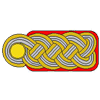
Posted: Wednesday, April 29, 2020 - 07:31 PM UTC
I like chips especially with fish 
Hate colour modulation but that's another story.

Hate colour modulation but that's another story.
spongya


Joined: February 01, 2005
KitMaker: 2,365 posts
Armorama: 1,709 posts

Posted: Wednesday, April 29, 2020 - 07:42 PM UTC
Quoted Text
Steve Zaloga in one of his Military Modeling Magazine articles referred to excessive wreathing as akin to making vehicles look like they had been sitting outside at Aberdeen Proving Grounds for 50 plus years.
And he is right. But if you do only realistic weathering, then you end up with pretty bland vehicles. If you look at tanks in real life from this perspective they look very unfinished compared to a model... (But no seam lines and injection marks, true, but no rust, color modulation, paint fading, chips, either. Normally only construction vehicles, used for decades, accumulate this much damage we depict on tanks that were in use for a couple of months only before being knocked out. Same goes for white washes...) I think weathering is a way to "tell a story", not to actually recreate something as it would look like in a miniature form. Everyone to their own - if you choose one or the other, who's to judge you? I don't think there is one correct answer to this question.
deathdork
Joined: March 26, 2007
KitMaker: 314 posts
Armorama: 296 posts
KitMaker: 314 posts
Armorama: 296 posts

Posted: Wednesday, April 29, 2020 - 08:12 PM UTC
Quoted Text
Quoted TextSteve Zaloga in one of his Military Modeling Magazine articles referred to excessive wreathing as akin to making vehicles look like they had been sitting outside at Aberdeen Proving Grounds for 50 plus years.
And he is right. But if you do only realistic weathering, then you end up with pretty bland vehicles. If you look at tanks in real life from this perspective they look very unfinished compared to a model... (But no seam lines and injection marks, true, but no rust, color modulation, paint fading, chips, either. Normally only construction vehicles, used for decades, accumulate this much damage we depict on tanks that were in use for a couple of months only before being knocked out. Same goes for white washes...) I think weathering is a way to "tell a story", not to actually recreate something as it would look like in a miniature form. Everyone to their own - if you choose one or the other, who's to judge you? I don't think there is one correct answer to this question.
deathdork
Joined: March 26, 2007
KitMaker: 314 posts
Armorama: 296 posts
KitMaker: 314 posts
Armorama: 296 posts

Posted: Wednesday, April 29, 2020 - 08:15 PM UTC
Sorry about the last un-nimble repeat. I was about to complement you on the observation. We often don't want to admit to the artistic side of our chosen hobby.
I admit that I appreciate the artistry.
the main thing is we all have fun in our chosen way
I admit that I appreciate the artistry.
the main thing is we all have fun in our chosen way

PanzerKarl

Joined: April 20, 2004
KitMaker: 2,439 posts
Armorama: 1,980 posts

Posted: Wednesday, April 29, 2020 - 08:28 PM UTC
Quoted Text
Sorry about the last un-nimble repeat. I was about to complement you on the observation. We often don't want to admit to the artistic side of our chosen hobby.
I admit that I appreciate the artistry.
the main thing is we all have fun in our chosen way
You hit the nail right on the head

Bravo1102

Joined: December 08, 2003
KitMaker: 2,864 posts
Armorama: 2,497 posts

Posted: Wednesday, April 29, 2020 - 08:35 PM UTC
Just remember that a peacetime vehicle will last a lot longer and have a lot more time to get chipped and faded.
Some vehicles are kept in storage under a tarp for weeks before taken out for serious training. And sometimes there isn't the time, supplies or even inclination to take care of wear and tear of the paint finish.
I have seen tanks that looked hideously chipped because a repaint was poorly done. Others where the touch up painting ruined the finish and made it look like a child hand painting his first model with Testors enamels and a nylon brush.
Look at pictures of service vehicles and at other built models. What do you want to do? You can make visually interesting vehicles with realistic weathering that tells the story of where the vehicle was and how it was maintained without going all modulated and chipped but it takes research and a steady hand. And the veteran will look at it and praise it as spot on.
Or you can go for what everyone else does.
Do what you want. It's a hobby you only have to please yourself. Enjoy it. Love what you do and it'll never seem like work. That's what a hobby is all about.
Some vehicles are kept in storage under a tarp for weeks before taken out for serious training. And sometimes there isn't the time, supplies or even inclination to take care of wear and tear of the paint finish.
I have seen tanks that looked hideously chipped because a repaint was poorly done. Others where the touch up painting ruined the finish and made it look like a child hand painting his first model with Testors enamels and a nylon brush.
Look at pictures of service vehicles and at other built models. What do you want to do? You can make visually interesting vehicles with realistic weathering that tells the story of where the vehicle was and how it was maintained without going all modulated and chipped but it takes research and a steady hand. And the veteran will look at it and praise it as spot on.
Or you can go for what everyone else does.
Do what you want. It's a hobby you only have to please yourself. Enjoy it. Love what you do and it'll never seem like work. That's what a hobby is all about.

varanusk


Joined: July 04, 2013
KitMaker: 1,288 posts
Armorama: 942 posts

Posted: Wednesday, April 29, 2020 - 10:54 PM UTC
You can do what you want, that's obvious. You don't even need to ask here what to do, it's your model.
BUT if you are concerned about accuracy and realism, then you are not that free, nor there are many answers. And according to the subject of the thread, Mike is asking about accuracy.
You can paint a Panzer III light blue, a Panther with the DAK emblem, an Abrams in Vietnam war, you can add lots of chipping, rust the wood, fade the paint to white. Looks cool? sure. Is it beautiful? absolutely. Is it realistic? NO
Of course there are abandoned vehicles or some even in service, where these effects are acceptable -I am not talking about them.
So, saying that you can do whatever you want when he is asking about historical accuracy is not correct. From my point of view.
BUT if you are concerned about accuracy and realism, then you are not that free, nor there are many answers. And according to the subject of the thread, Mike is asking about accuracy.
You can paint a Panzer III light blue, a Panther with the DAK emblem, an Abrams in Vietnam war, you can add lots of chipping, rust the wood, fade the paint to white. Looks cool? sure. Is it beautiful? absolutely. Is it realistic? NO
Of course there are abandoned vehicles or some even in service, where these effects are acceptable -I am not talking about them.
So, saying that you can do whatever you want when he is asking about historical accuracy is not correct. From my point of view.
Posted: Wednesday, April 29, 2020 - 11:19 PM UTC
A vehicle that managed to make it through a fair amount of urban combat might display more chipping than vehicles in the field--falling masonry, flying shrapnel, etc., although I believe armored vehicles tend not to fair well in urban environments, as a rule.
All that said, I agree with those that have pointed out the artistic aspect of finishing a model. and sometimes you just want to practice or refine your technique. I tend to go for what appeals to me and what I think will look good to the predominantly un-educated (meaning not knowing a lot about armor and history) viewers of my collection.
Just my $0.02...

All that said, I agree with those that have pointed out the artistic aspect of finishing a model. and sometimes you just want to practice or refine your technique. I tend to go for what appeals to me and what I think will look good to the predominantly un-educated (meaning not knowing a lot about armor and history) viewers of my collection.
Just my $0.02...

Bravo1102

Joined: December 08, 2003
KitMaker: 2,864 posts
Armorama: 2,497 posts

Posted: Wednesday, April 29, 2020 - 11:41 PM UTC
All one needs do to chip the paint on a vehicle is change a headlight.
Most of the screws and bolts are painted after installation. So removing one chips the paint.
That's what I meant by research. That way you learn the commonly replaced or serviced items where paint is stripped. Then there's the movement of the crew. Rubber boots or not, handling and movement of tends to take the paint off. And throwing tools around in frustration or even kicking the freaking thing for being just a pain in the neck.
By the way most falling masonry is softer than the metal a tank is made of. So you'll get a scratch but not necessarily chipped paint.
Bored crews have been known to throw rocks at vehicles just to see if it does scratch the paint.
Most of the screws and bolts are painted after installation. So removing one chips the paint.
That's what I meant by research. That way you learn the commonly replaced or serviced items where paint is stripped. Then there's the movement of the crew. Rubber boots or not, handling and movement of tends to take the paint off. And throwing tools around in frustration or even kicking the freaking thing for being just a pain in the neck.
By the way most falling masonry is softer than the metal a tank is made of. So you'll get a scratch but not necessarily chipped paint.
Bored crews have been known to throw rocks at vehicles just to see if it does scratch the paint.
Posted: Thursday, April 30, 2020 - 12:29 AM UTC
The accuracy debate can rage for pages and pages! For WWII modelling, the two areas where chipping is more acceptable are:
1) Africa campaign - many vehicles arrived in the "wrong" colours and were repainted in-theatre, in less than ideal conditions, so this softer repaint could be grit-blasted off of raised edges etc by the wind and sand to reveal the factory paint underneath. This is even more applicable if the expedient of local mud was slopped on instead of paint!
2) Winter white-wash - this was often no more than a chalky slurry that abraded off to reveal the paint underneath after a while.
Either way you'll be using the same chipping techniques regardless of the colours involved!
1) Africa campaign - many vehicles arrived in the "wrong" colours and were repainted in-theatre, in less than ideal conditions, so this softer repaint could be grit-blasted off of raised edges etc by the wind and sand to reveal the factory paint underneath. This is even more applicable if the expedient of local mud was slopped on instead of paint!
2) Winter white-wash - this was often no more than a chalky slurry that abraded off to reveal the paint underneath after a while.
Either way you'll be using the same chipping techniques regardless of the colours involved!
janders

Joined: July 10, 2016
KitMaker: 45 posts
Armorama: 45 posts

Posted: Thursday, April 30, 2020 - 01:25 AM UTC
I disagree with the consensus of this post. Chipping happens on all vehicles. The great great majority of WW2 photos on the internet are low resolution black and white and taken from a distance. Small chips on logical areas of wear don’t show up on these photos.
Now of course, people over do it, making a new tank look like someone took a grinder and randomly attacked it. But in scale chips.... the key is in scale! In small amounts can make any project look more real.
Of course the best guide is good references. I just grabbed these off my completed models folder on my desktop... all show various chipping. Clearly things like a decades old T55, or aluminum based road wheel have more chipping. But even WW2 era vehicles have minor chips visible in logical places on high res photos...
https://imgur.com/gallery/NBAPyvJ
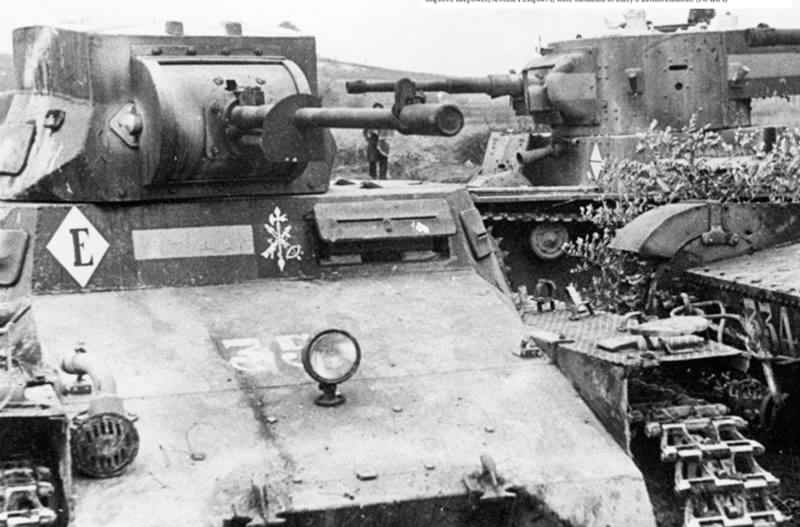
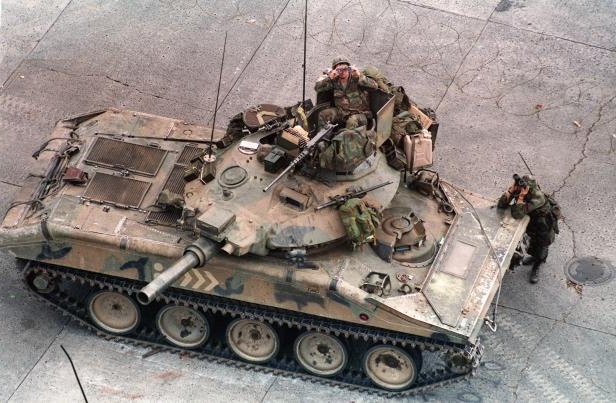
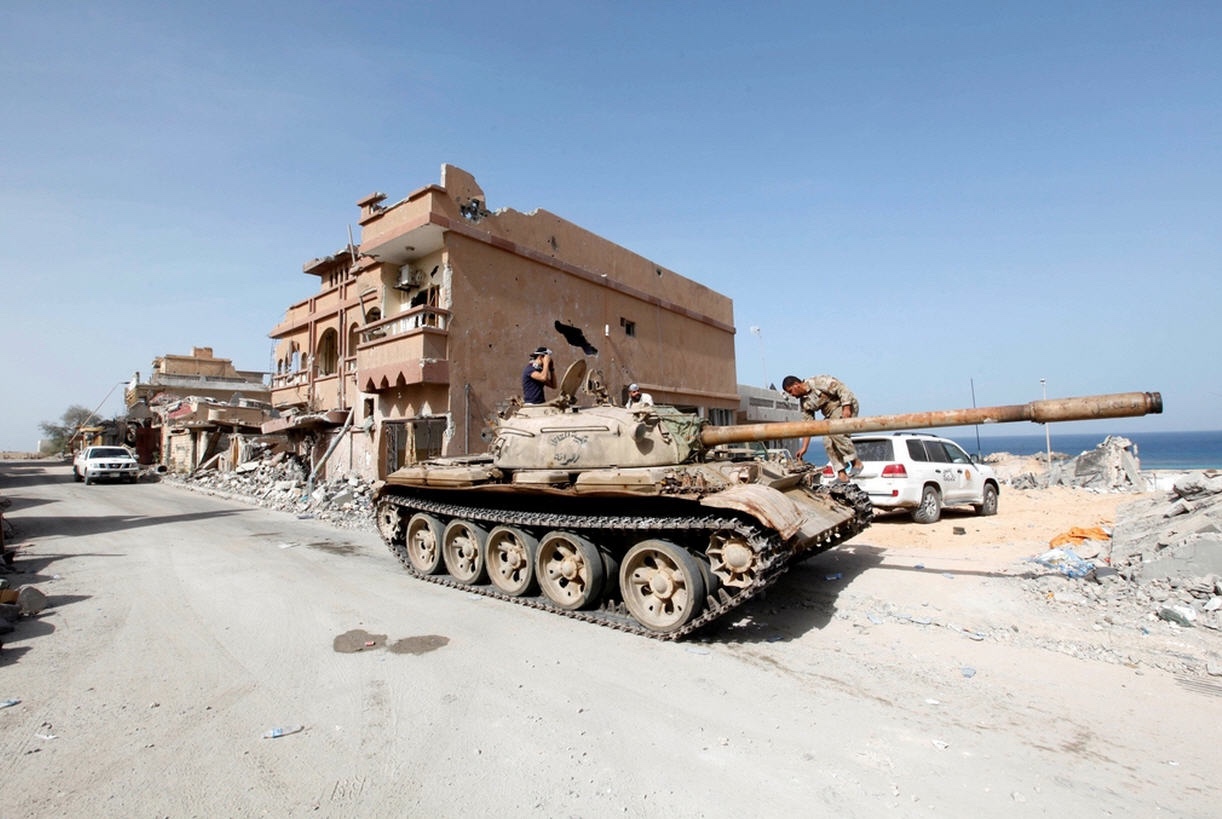
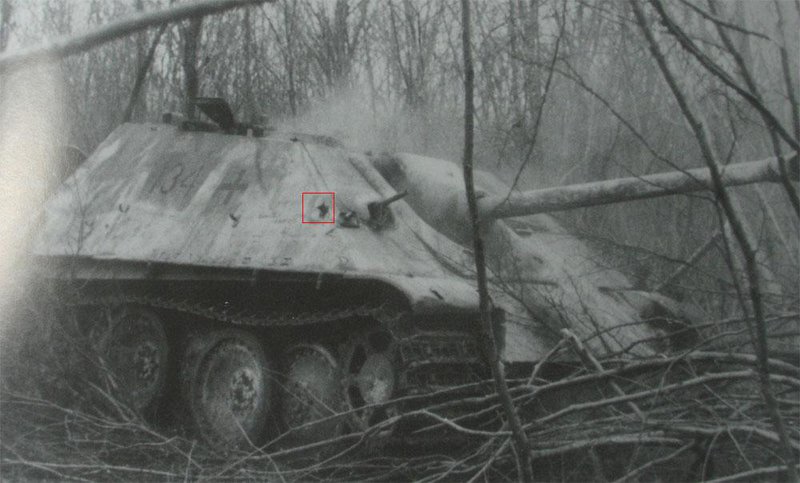
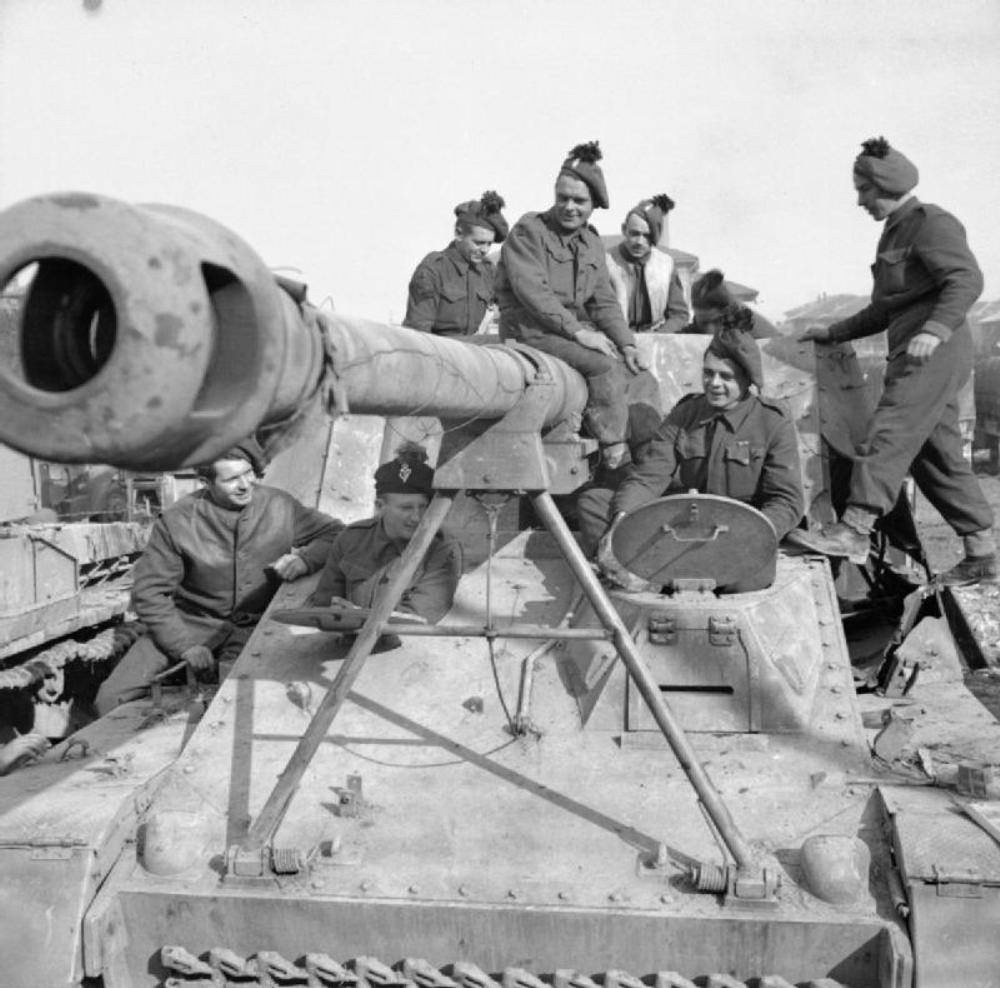
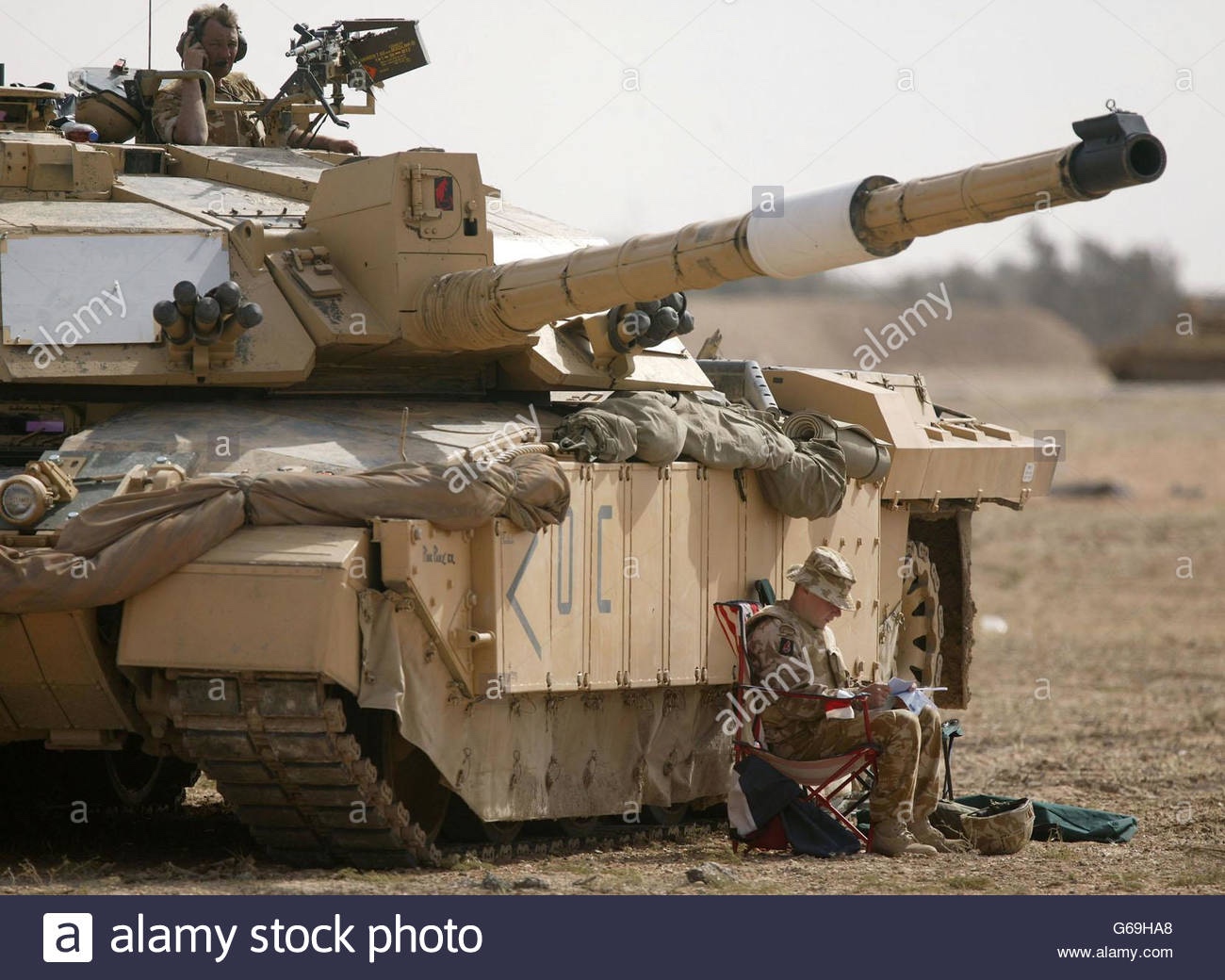
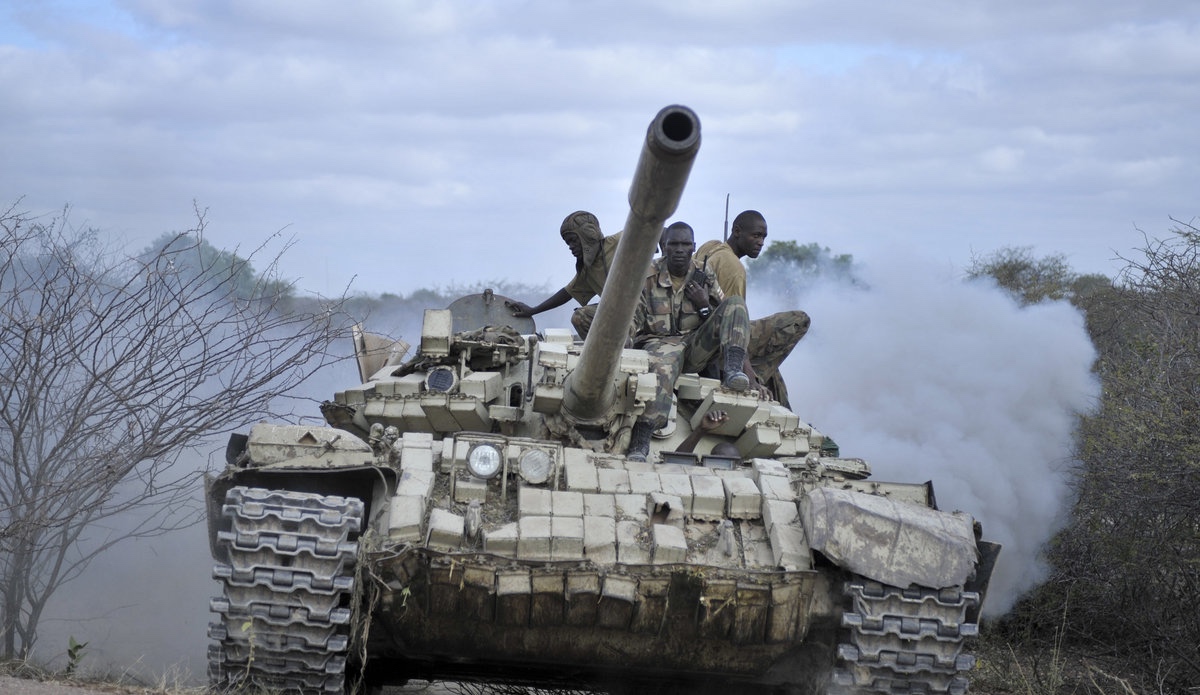
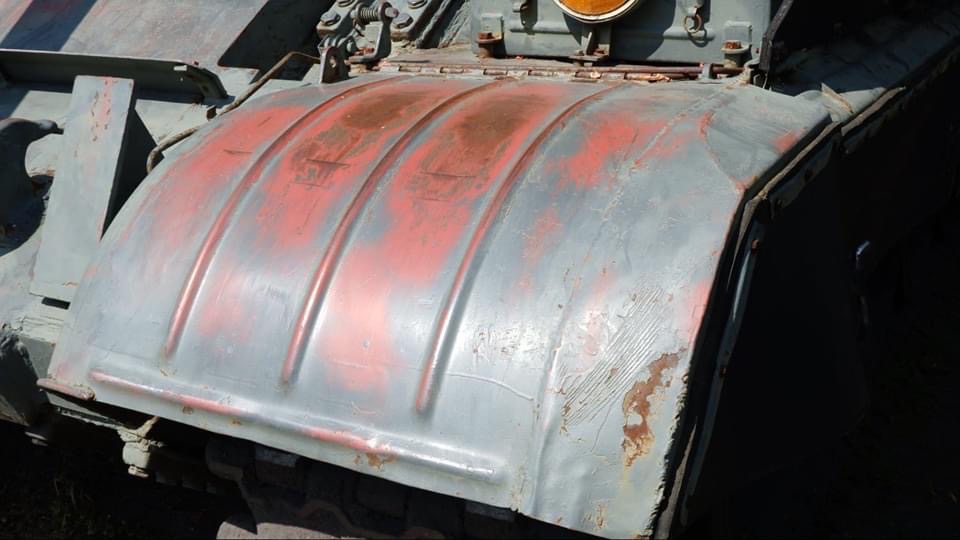
Now of course, people over do it, making a new tank look like someone took a grinder and randomly attacked it. But in scale chips.... the key is in scale! In small amounts can make any project look more real.
Of course the best guide is good references. I just grabbed these off my completed models folder on my desktop... all show various chipping. Clearly things like a decades old T55, or aluminum based road wheel have more chipping. But even WW2 era vehicles have minor chips visible in logical places on high res photos...
https://imgur.com/gallery/NBAPyvJ








jrutman

Joined: April 10, 2011
KitMaker: 7,941 posts
Armorama: 7,934 posts

Posted: Thursday, April 30, 2020 - 01:48 AM UTC
It would depend when and where the vehicle was operating for starters. Desert areas=more wear and tear on paint. Use logic for showing chipping for sure. I was around the M113 series for about 10 years. They got repainted in the shop periodically and I got to inspect them almost every week. The only chipped areas would be where metal would hit metal,like on the ramp or around the hatch rings where we passed ammo boxes through or the 50cal mount when it was being stowed inside,stuff like that. Inside once again,where metal contacts metal.
By the end of WWII the majority of German tanks issued had a drastically reduced service life. The first Panther knocked out in Stoumont Belgium during the attack by LAH on the 30th US Inf Div had been issued only a few weeks prior,rarely driven because of fuel shortages and then never got to fire one shot in combat! So how much chipping would there be really ?
On the flip side,the HJ had a PzIV that needed depot level maint. from damage in Normandy and was DRIVEN all the way back to Germany,repaired and soldiered on for who knows how long ? The tank would surely be kinda beaten up.
Complex issue here and no easy answer. You have to decide what tank you want to portray I suppose and go from there?
J
By the end of WWII the majority of German tanks issued had a drastically reduced service life. The first Panther knocked out in Stoumont Belgium during the attack by LAH on the 30th US Inf Div had been issued only a few weeks prior,rarely driven because of fuel shortages and then never got to fire one shot in combat! So how much chipping would there be really ?
On the flip side,the HJ had a PzIV that needed depot level maint. from damage in Normandy and was DRIVEN all the way back to Germany,repaired and soldiered on for who knows how long ? The tank would surely be kinda beaten up.
Complex issue here and no easy answer. You have to decide what tank you want to portray I suppose and go from there?
J
redcap

Joined: November 06, 2005
KitMaker: 753 posts
Armorama: 378 posts

Posted: Thursday, April 30, 2020 - 02:52 AM UTC
(QUOTE) - A few years ago, a British blogger noted that he had painted up a Panzer IV with all the preshading, pin washes, dot filters, chipped paint, rust streaks and other effects promoted by the Spanish School of modelers. He showed off his masterpiece to a German Eastern Front veteran. The old fellow shook his head sadly and smiled, saying "If only they lasted long enough to look like that."
Yes that was me describing the reaction in the mid 1980's when I was in Germany with BAOR and our regimental interpreter was ex 2nd SS 'Das Reich' and a Kursk and Normandy vet (Imagine that appointment now in our PC age!). I can't recall which specific model it was, but I learnt a lot from him about "weathering" from comments he made (as a non modeller himself) about my AFV collection back then when it was all 'The Verlinden Way' - Not Spanish School - and with the ludicrous blackened gun muzzles too that were then the accepted norm....as he said the propellant used was predominantly smokeless!
Personally and IMHO, 'less is (much) more' in AFV model terms and many so called 'weathered' models are simply canvasses for modellers demonstrating their Airbrushing skills or other techniques and competence rather than delivering any genuine realism in the end model.
Gary
Yes that was me describing the reaction in the mid 1980's when I was in Germany with BAOR and our regimental interpreter was ex 2nd SS 'Das Reich' and a Kursk and Normandy vet (Imagine that appointment now in our PC age!). I can't recall which specific model it was, but I learnt a lot from him about "weathering" from comments he made (as a non modeller himself) about my AFV collection back then when it was all 'The Verlinden Way' - Not Spanish School - and with the ludicrous blackened gun muzzles too that were then the accepted norm....as he said the propellant used was predominantly smokeless!
Personally and IMHO, 'less is (much) more' in AFV model terms and many so called 'weathered' models are simply canvasses for modellers demonstrating their Airbrushing skills or other techniques and competence rather than delivering any genuine realism in the end model.
Gary

barnslayer

Joined: July 29, 2002
KitMaker: 102 posts
Armorama: 102 posts

Posted: Thursday, April 30, 2020 - 03:05 AM UTC
In the end we are doing this for our own gratification. As it is with other realms of artistry. At one end of the spectrum you have photorealistic. At the other extreme is abstract. Then there's all that falls between the those two. To each his own. Just be honest with yourself. Don't paint a Picasso and expect others to accept it as a passport photo.
Scarred

Joined: March 11, 2016
KitMaker: 1,792 posts
Armorama: 1,186 posts

Posted: Thursday, April 30, 2020 - 03:10 AM UTC
Vehicles operating in scrub or wooded areas often have scrapes running horizontal down the sides from branches and shrubs grinding down the side as the vehicle passed. Very rarely would they chip up the paint but would leave long marks through the dust, dirt and grime to the paint. And they had a layered effect as the dirt and dust would build up again only to be scraped off again driving thru more scrub. You could see the old scratches underneath the new layer of dust and so on. Not much chipping unless it was a around a dent or damaged area but plenty of scrapes. Once we washed the rigs the scrapes pretty much disappeared, unless they marred the paint, and we would touch up any chips or severe scrapes with CARC or Krylon.
 |












